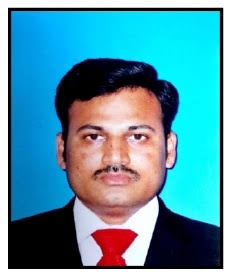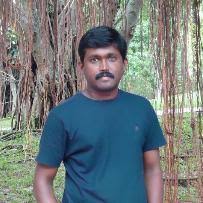ECM mimicking wound healing patch developed collaboratively
- Shivendu Ranjan
- Dec 31, 2022
- 4 min read
Updated: Jan 2, 2023
In a collaborative effort of Babasaheb Bhimrao Ambedkar University, Lucknow; NanoBio Research Lab, IIT Kharagpur; King Khalid University, Saudi Arabia; and Taylor's University, Kuala Lumpur, Malaysia have developed a unique patch for diabetic wound healing which is biodegradable and can mimic the extracellular matrix (ECM) which enhanced the healing property of the patch.

The team have attempted to formulate an electrospun nanofibrous wound healing patch with multifunctional capabilities such as (i) a sustained and controlled release of bioactive compound, (ii) better absorption of wound exudates, (iii) potent antimicrobial, anti-biofilm properties and (iv) better cell migration and proliferation.


Chitosan and polyvinyl alcohol (PVA) have been used to encapsulate active therapeutic agents, i.e. curcumin and Zinc Oxide nanoparticles in this case. The vital point is that such polymeric blend's nanofibrous patches can also be used with many other active ingredients.

The figure shows the Scanning Electron Microscopic image for two different formulations of Chitosan/PVA blended electrospun nanofibrous wound healing patches with active ingredients such as curcumin and ZnO nanoparticles, respectively.
The patch developed has been proven for different bioactivity, i.e. drug release, antimicrobial & antibiofilm activity, mimicking property of ECM, & proven effect on an animal model. SEM microphotographs demonstrated that the prepared nanofiber showed a smooth, fine interconnected nanofiber with a web-like structure, which is an essential property of nanofiber for wound healing. Optimized nanofiber batches possess sufficient mechanical strength, biodegradability and water retention capacity for better wound healing. In-vitro drug release studies confirmed nanofiber’s sustained and controlled release characteristics for a prolonged period. Anti-bacterial studies demonstrated that fabricated nanofibers have excellent anti-bacterial potential efficacy and anti-biofilm ability of nanofiber against both S. aureus and P. aeruginosa.Furthermore, the results demonstrated that ZnO, in addition to CUR, has synergistic antimicrobial effects. This would enable the fabricated scaffolds to serve as potential anti-bacterial wound dressings capable of preventing wound infection. The in-vitro cytotoxicity studies confirmed that our developed nanofibers are non-toxic on HaCaT cells. The cell migration assay findings in HaCaT cell lines demonstrate an increase in cell migration at the wound site to fill the gap, indicating that the developed nanofiber scaffolds have rapid wound-healing potential.

The figure shows mages of the wound repairing process on an animal model in diabetic rats on 0, 4th, 9th, and 14th days after treatment of rats with normal control, and negative control (scale bar-4 mm).
The in-vivo studies in diabetically induced rats demonstrated that CS-PVA-ZnO-CUR nanofiber significantly improved wound contraction during 14 days. Histology studies confirmed nanofiber’s ability to re-epithelize and collagen formation during wound healing. According to the observations, the nanofiber formulation created has excellent attributes for diabetic wound healing in diabetic-induced rats and may be refined further for clinical studies. The higher scale-up ability of this formulation paved the way for future commercialization, suggesting that it may be effective for diabetic wound healing.
About the Principal Investigators of different labs:
Shubhini A Saraf
Prof. Shubhini A Saraf has recently taken charge of Director of National Institute of Pharmaceutical Education and Research (NIPER) Raebareli. She is Professor of Pharmaceutical Department of Babasaheb Bhimrao Ambedkar University Lucknow.
Sanjay Singh
Prof Sanjay Singh is Vice Chancellor of Babasaheb Bhimrao Ambedkar University Lucknow. Prof Singh is also Professor of Department of Pharmaceutical Engineering, IIT BHU Varanasi.
Shivendu Ranjan
Dr. Shivendu Ranjan is currently working as Assistant Professor at the Indian Institute of Technology Kharagpur (IIT Kharagpur) and focusing the work on Nanomedicine, Nanotoxicology, and Nano-nutraceuticals.
Dr. Ranjan is a Bioengineer passionate for Nanobiotechnology. He is a Life Fellow of many reputed scientific societies like, (i) Indian Chemical Society; (ii) The Linnean Society of London, (iii) Indian Engineering Teachers Association, and (iv) Bose Science Society. He is also an Associate Editor of Environmental Chemistry Letters (Springer journal of 9.02 Impact Factor).
After graduating from VIT Vellore, Dr. Ranjan has served many organizations like, (i) Indian Institute of Food Processing and Technology (MoFPI, Govt of India); (ii) E-Spin Nanotech, SIIC, IIT Kanpur, (iii) University of Johannesburg; and (iv) Gujarat Biotechnology Research Centre, (DST-Govt of Gujarat). Throughout his research journey he has 01 WIPO Patent, 55 scientific publications, 34 edited book and 2 authored books.
Paruvathanahalli Siddalingam Rajinikanth
Prof PS Rajinikanth is working at the Department of Pharmaceutical Science, Babasaheb Bhimrao Ambedkar University Lucknow (A Central University of Ministry of Education, Govt of India). He is also an adjunct professor of the Department of Pharmaceutical Technology, School of Pharmacy, Taylor’s University Lakeside Campus, Kuala Lumpur, Malaysia.
Kumarappan Chidambaram
Dr. Kumar is a research track academician and senior lecturer in the School of Pharmacy, at Taylor’s University. Dr. Kumar was awarded his doctorate in pharmacology in 2008, with a specialization in endocrine pharmacology, from the Department of Pharmaceutical Technology, Jadavpur University, Kolkata, India. He obtained his undergraduate (BPharm, 1999) and postgraduates (MPharm, 2003) from Dr. MGR Medical University Chennai, India. Dr.Kumar has received a prestigious National Doctoral Fellowship (NDF) from AICTE, Government of India. Now Dr. Kumar has been directed his on animal and non-animal models of metabolic syndrome and natural products. Dr.Kumar’s research mainly focuses on the investigation of cellular and molecular mechanisms of high fructose corn syrup induced metabolic abnormalities and the development of potent molecules for the treatment of metabolic syndrome and insulin resistance.
Research Scholars and Students, the real hero behind this work:
Sachin Yadav, Dilip Kumar Arya, Prashant Pandey, Sneha Anand, and Anurag Kumar Gautam
The full-length article was published in the International Journal of Nanomedicine (Impact Factor: 7.033).



















Comments